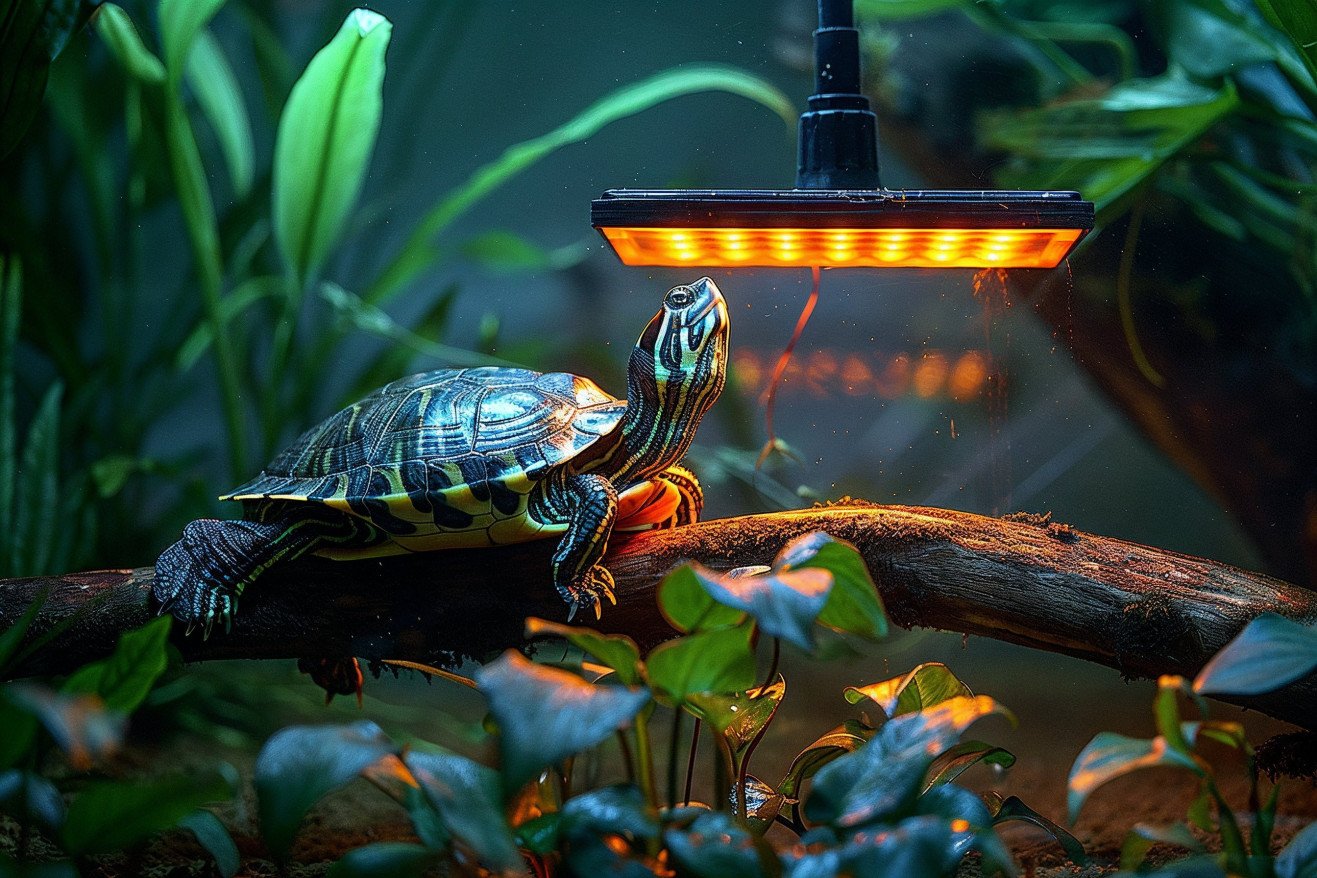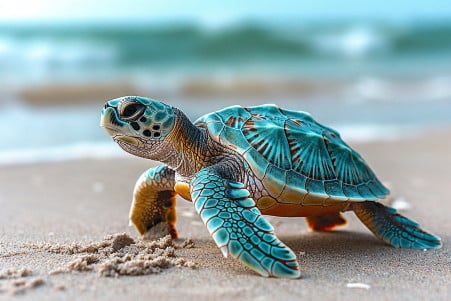Do Turtles Really Need a Heat Lamp? Lighting and Heating Needs
19 April 2024 • Updated 18 April 2024

While it's well-known that proper lighting and heating are important for the health and well-being of pet turtles, do turtles really need a dedicated heat lamp? The answer is yes, turtles do need a heat lamp or some other form of supplemental heating. As ectotherms, or cold-blooded animals, turtles are unable to maintain their own body temperature and need an external heat source to keep the environment around them at the right temperature.
Drawing on the work of herpetologists and veterinarians, we will take a deep dive into the heating needs of different species of turtles, including both aquatic and terrestrial turtles. We will cover everything from the best basking temperatures to the lowest temperatures turtles can handle at night, combining scientific research with real-world applications. This will help you better understand the thermophysiology and behavior of turtles and, in turn, help you create the best possible heated environment for your turtle.
Do turtles need a heat lamp?
Understanding Turtle Thermophysiology
Turtles are ectothermic animals, meaning they rely on external sources to regulate their body temperature, as explained in this guide from King British. Different turtle species have different ideal temperature ranges for both their basking and water habitats. For instance, ReptiFiles suggests a basking surface temperature of 104°F (40°C) and an air temperature of 85-90°F (30-32°C) for red-eared sliders.
It's important to maintain these temperatures as closely as possible to ensure that turtles can properly carry out their metabolic functions, absorb nutrients, and stay healthy. As noted by Terrapins.co.uk, terrapins need their water to be between 23.8-26.6°C to prevent hibernation. A turtle's age, how active it is, and other environmental factors also play a role in determining the exact temperatures it needs. For example, younger turtles need warmer water, so ReptiFiles suggests 78-82°F (24-29°C) for red-eared slider hatchlings.
Knowing these details about turtle thermophysiology can help you ensure that your pet's habitat meets their biological needs. When the right thermal gradient is in place, turtles can regulate their body temperature and stay healthy and happy, which brings us to the next section on heat lamp options.
How to Choose the Right Heat Lamp for Your Turtle
There are a few things to keep in mind when choosing the right heat lamp for your turtle. According to Petco, reptile heat lamps have a variety of features, including visible daylight, night light, and basking bulbs that provide direct heat. The kind of lamp you choose will depend on the species of your turtle and their specific temperature needs.
As noted by the Long Island Bird and Exotics Pet Vet, desert species of turtles may require basking temperatures between 90-100°F, while rainforest species like iguanas need a temperature gradient between 75-105°F. The wattage of the heat bulb you choose will depend on the temperature your turtle needs and the size of their habitat. You'll also need to make sure that the lamp is positioned correctly to avoid overheating.
According to AllTurtles.com, ceramic heat emitters and mercury vapor lamps are the two most popular types of heat lamps for turtles. When choosing the best heat lamp for your turtle's habitat, you'll need to take into account things like visible light, UVB/UVA, and the lamp's ability to distribute heat.
Creating the Perfect Turtle Tank
Turtles need a tank that's been set up to meet their specific needs. According to HowStuffWorks, this means that your turtle's tank will have to have both a water area and a dry basking area. The basking area should include a solid surface that your turtle can easily climb onto and rest under the heat lamp.
The depth and cleanliness of the water are also important. King British notes that the water in the tank should be 10 gallons per inch of the turtle's shell, and the water should be 1.5 times the length of the turtle to prevent the turtle from flipping over. To keep the water clean, an external filter is the best option.
In addition to the water and basking areas, the tank can be filled with other items like substrate, hiding spots, and other things that will make the tank more comfortable and natural for the turtle. HowStuffWorks notes that sand or soft soil can be used as a substrate in the dry area. Once you've set up the tank, your turtle will have everything it needs to be happy and healthy.
How to Use Heat Lamps and Lighting Schedules
Heat lamps should be kept on for 8-12 hours a day to match the natural light cycle, according to Pets on Mom.com. Turtles also need UVB lighting, which is necessary for vitamin D3 synthesis and calcium absorption, says PetMD.
To make sure the lighting and heating are consistent and controlled, Long Live Your Turtle recommends using timers and thermostats. It's also important to check basking and water temperatures often to make sure the right conditions are being met, as incorrect heating can lead to serious health problems like metabolic bone disease.
Signs of Improper Heating and Potential Health Consequences
According to VCA Animal Hospitals, some signs of improper heating for pet turtles include lethargy, loss of appetite, and abnormal shell growth. If turtles don't get enough UVB exposure, they can develop metabolic bone disease and other nutritional deficiencies, per Pets on Mom.com.
In addition, PetMD notes that keeping turtles in an environment that's too cool can lead to respiratory infections and other health problems. It's important to make sure that these issues are treated quickly to avoid more serious complications.
Regular vet visits can help ensure that any heating-related issues your turtle is experiencing are caught and treated before they become more serious. By keeping a close eye on your pet's behavior and well-being and adjusting their habitat as needed, you can make sure that your turtle is happy and healthy in an environment with the right temperature.
How to Help Turtles Adjust to Their New Home
As with any pet, it's important to help your turtle adjust to its new home. When you first bring your turtle home, make sure to give it time to acclimate to its new environment. As Redearslider.com explains, you should also avoid handling your turtle too much during the first few days, as turtles can be quite slippery and difficult to hold and may squirm, scream, or defecate when they feel threatened.
Watch your turtle's behavior and appetite to make sure it's adjusting to its new home. According to Turtle Towns, most turtles will start eating within a week of being introduced to their new home. However, if your turtle doesn't eat or seems stressed after a week, it's best to take it to a vet to make sure there isn't an underlying issue that needs to be addressed.
Ultimately, making sure your turtle has a warm, comfortable environment and giving it time to adjust will help ensure your new pet is happy and healthy in its new home. With a little patience and careful observation, you can help your turtle make a smooth transition to its new home.
Conclusion: How to Create the Best Thermal Environment for Your Turtle
It is important to have the right heating and lighting in place to make sure your turtle is healthy and happy. Knowing exactly what temperature your turtle species needs is key.
With the right heat lamp and habitat, you can make sure your turtle has everything it needs to thrive. However, you will need to keep a close eye on the temperature and make adjustments as needed to make sure the conditions are just right.


